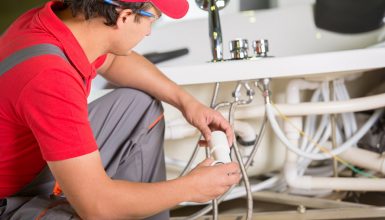Practical Remedies for Dealing with Low Water Pressure in Your Home
Practical Remedies for Dealing with Low Water Pressure in Your Home
Blog Article
Just about everyone may have their private piece of advice in relation to Low Water Pressure in the House?.

Low water stress in your house can be an aggravating trouble, influencing every little thing from showering to washing meals. If you're experiencing weak water flow, there are several feasible causes and services to check out. In this guide, we'll talk about typical reasons for low tide pressure and useful actions to attend to the problem properly.
Introduction to Low Water Pressure
Low tide pressure takes place when the circulation of water from your taps, showers, and other components is weak than normal. This can make day-to-day jobs a lot more tough and much less reliable. Understanding the reasons for low water pressure is crucial to finding the appropriate service.
Common Reasons For Low Water Stress
Pipe Obstructions
In time, pipes can become blocked with mineral deposits, debris, or debris, limiting the circulation of water. This is an usual concern in older homes with galvanized steel pipes.
Deterioration
Deterioration within pipelines can lead to leaks and minimized water pressure. Rust build-up can restrict water circulation, particularly in maturing plumbing systems.
Faulty Pressure Regulatory Authorities
Pressure regulatory authorities are responsible for preserving consistent water stress in your home. If they malfunction, it can lead to low water pressure or uneven flow throughout your house.
Community Water System Issues
Sometimes, the issue lies outside your home. Municipal water supply concerns, such as main line leakages or maintenance work, can momentarily reduce water stress in your location.
Exactly How to Diagnose Low Tide Pressure
Inspecting Taps and Fixtures
Beginning by checking the water stress at various taps and components throughout your home. If the problem is isolated to certain areas, it may suggest localized troubles.
Examining Pipelines
Examine visible pipelines for indicators of leaks, corrosion, or clogs. Take notice of any type of unusual noises, such as knocking or rattling pipes, which could suggest concerns within the plumbing system.
Consulting with a Plumber
If you're incapable to pinpoint the reason for low tide pressure, think about hiring an expert plumber to conduct an extensive evaluation. They can identify underlying issues and recommend appropriate services.
Do It Yourself Solutions to Fix Low Water Pressure
Cleaning Aerators and Showerheads
Mineral deposits can build up in aerators and showerheads, reducing water flow. Eliminate and clean up these elements consistently to improve water stress.
Flushing Water Heater
Sediment build-up in the water heater can restrict flow and lower efficiency. Purging the container regularly assists eliminate debris and keep ideal efficiency.
Examining Pressure Regulator
Guarantee that the pressure regulatory authority is functioning correctly. Readjusting or changing the regulator can help restore correct water pressure throughout your home.
Clearing Up Clogs in Pipeline
For minor clogs, try using a plumbing snake or chemical drain cleaner to clear obstructions in pipes. Beware when making use of chemicals and adhere to safety guidelines.
When to Call a Professional Plumber
If do it yourself initiatives fail to fix the concern or if you believe substantial plumbing issues, it's finest to look for assistance from an accredited plumber. They have the competence and devices to attend to complicated issues securely and successfully.
Safety Nets to Preserve Water Stress
Normal Upkeep
Arrange routine upkeep for your plumbing system to prevent concerns such as corrosion, leaks, and blockages. Dealing with minor problems early can aid prevent more substantial repair work later on.
Installing a Stress Booster
Consider mounting a pressure booster pump to improve water pressure in locations with constantly reduced flow. This can be particularly helpful for multi-story homes or residential or commercial properties with high-demand components.
Monitoring Water Use
Bear in mind water use behaviors and prevent overtaxing the plumbing system. Easy changes, such as staggering showers and washing lots, can assist keep sufficient water stress.
Verdict
Dealing with low tide stress can be aggravating, but recognizing the underlying causes and applying appropriate services can recover ideal flow throughout your home. Whether it's cleaning up aerators, checking pipes, or consulting with a plumber, taking proactive actions can guarantee a constant supply of water for your everyday requirements.
HOW TO FIX LOW WATER PRESSURE IN YOUR HOUSE (EXPERT GUIDE)
The morning shower lacking any real pressure? Bathtub taking hours to fill? Or maybe you’re dissatisfied with the inadequate performance from your combi boiler?
Then you, like millions of others across the UK, might be experiencing low water pressure.
Fortunately, the good news is that you don’t have to continue living this way. The cause of low water pressure in the home is often quite simple, and you may not even require a plumber to fix the problem.
What causes low water pressure in the house?
If you are experiencing issues with water pressure throughout your home, then you may have one of the problems outlined below.
Most of these problems can be fixed quite easily, but for others, you may need to contact a plumber.
Obstructed Shutoff Valve
If you’ve just bought a new home or recently had building work conducted on your property, there is a chance that your water valves were not fully opened.
If the water valve is partially closed, then you may be restricting the amount of water entering your home. To fix this, simply ensure the valve is fully open.
If the valve appears fully open but you are still encountering reduced water pressure, then the valve may be broken. If this is the case, do not under any circumstances try to fix it without proper training.
Often found under your kitchen sink, a water valve will usually look like a bright yellow handle.
Again, if you believe the water valve is broken, contact a plumber immediately.
Leaks in Your Water Pipes
Leaks are the worst-case scenario when it comes to low water pressure.
If the water pipes are damaged, then this will cause low water pressure, as not all the water will make it to your taps.
After you’ve checked to see if the valve is fully open, you can conduct a leak check of your home. Now, this may seem scary, but it is actually quite simple.
Clogged Water Pipes
Clogged water pipes are one of the most common causes of low water pressure.
These clogs usually build-up when your home is supplied water via iron pipes. Iron is particularly vulnerable to rusting which can then break off and cause an obstruction within your system. You also face the problem of things like dirt, gravel or sand entering creating mineral deposits which further block water flowing from the mains water supply.
Unfortunately, if you suspect that clogged pipes may be restricting your water supply, then you will need to contact a plumber.
In this situation, you will either need to have your pipes removed and cleaned or in more severe cases, you could require a new set of water pipes.
Designer Taps
Designer taps look fantastic, but are they built to be efficient in your plumbing system? Modern taps are built for modern homes and they often have lower flow rates that are specifically designed for use within high-pressure systems.
Install a Water Pressure Booster Pump
If the issue is simply that the mains water pressure supply is too low, the simplest fix is to invest in a booster pump. Found in homes of all shapes and sizes, booster pumps are a relatively cheap option to add extra pressure to your home.
Designed to increase water pressure by passing water into the pump from your mains supply and then ejecting it into your home water system at a higher pressure, a booster pump is a truly simple and effective solution to increasing water pressure.
https://www.anchorpumps.com/blog/the-plumbers-guide-to-fixing-low-water-pressure/

HOW TO FIX LOW WATER PRESSURE IN YOUR HOUSE (EXPERT GUIDE)
The morning shower lacking any real pressure? Bathtub taking hours to fill? Or maybe you’re dissatisfied with the inadequate performance from your combi boiler?
Then you, like millions of others across the UK, might be experiencing low water pressure.
Fortunately, the good news is that you don’t have to continue living this way. The cause of low water pressure in the home is often quite simple, and you may not even require a plumber to fix the problem.
What causes low water pressure in the house?
If you are experiencing issues with water pressure throughout your home, then you may have one of the problems outlined below.
Most of these problems can be fixed quite easily, but for others, you may need to contact a plumber.
Obstructed Shutoff Valve
If you’ve just bought a new home or recently had building work conducted on your property, there is a chance that your water valves were not fully opened.
If the water valve is partially closed, then you may be restricting the amount of water entering your home. To fix this, simply ensure the valve is fully open.
If the valve appears fully open but you are still encountering reduced water pressure, then the valve may be broken. If this is the case, do not under any circumstances try to fix it without proper training.
Often found under your kitchen sink, a water valve will usually look like a bright yellow handle.
Again, if you believe the water valve is broken, contact a plumber immediately.
Leaks in Your Water Pipes
Leaks are the worst-case scenario when it comes to low water pressure.
If the water pipes are damaged, then this will cause low water pressure, as not all the water will make it to your taps.
After you’ve checked to see if the valve is fully open, you can conduct a leak check of your home. Now, this may seem scary, but it is actually quite simple.
Clogged Water Pipes
Clogged water pipes are one of the most common causes of low water pressure.
These clogs usually build-up when your home is supplied water via iron pipes. Iron is particularly vulnerable to rusting which can then break off and cause an obstruction within your system. You also face the problem of things like dirt, gravel or sand entering creating mineral deposits which further block water flowing from the mains water supply.
Unfortunately, if you suspect that clogged pipes may be restricting your water supply, then you will need to contact a plumber.
In this situation, you will either need to have your pipes removed and cleaned or in more severe cases, you could require a new set of water pipes.
Designer Taps
Designer taps look fantastic, but are they built to be efficient in your plumbing system? Modern taps are built for modern homes and they often have lower flow rates that are specifically designed for use within high-pressure systems.
Install a Water Pressure Booster Pump
If the issue is simply that the mains water pressure supply is too low, the simplest fix is to invest in a booster pump. Found in homes of all shapes and sizes, booster pumps are a relatively cheap option to add extra pressure to your home.
Designed to increase water pressure by passing water into the pump from your mains supply and then ejecting it into your home water system at a higher pressure, a booster pump is a truly simple and effective solution to increasing water pressure.
https://www.anchorpumps.com/blog/the-plumbers-guide-to-fixing-low-water-pressure/
Hopefully you enjoyed our article about 10 Reasons for Low Water Pressure in Your House. Thanks so much for taking the time to browse our piece of content. Loved our piece? Please share it. Let someone else locate it. Thank you for being here. Please stop by our blog back soon.
This Resource Report this page